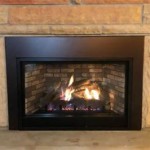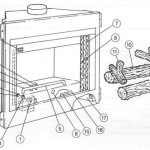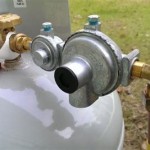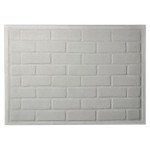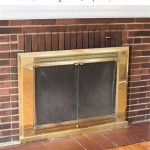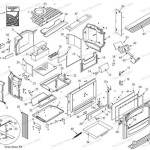Outdoor Wood Fireplaces: A Comprehensive Guide
An outdoor wood fireplace presents a compelling addition to any landscape, extending the usable living space beyond the confines of the home. These structures provide warmth, ambiance, and a focal point for gatherings, fostering a sense of community and relaxation. This article explores the considerations involved in selecting, installing, and maintaining an outdoor wood fireplace, offering a detailed overview of the key aspects of this increasingly popular outdoor feature.
The appeal of an outdoor fireplace is multifaceted. Beyond its practical function as a heat source, it offers an aesthetic charm that complements various architectural styles. The flickering flames and the aroma of burning wood create a distinct atmosphere, encouraging socializing and a connection with nature. Unlike portable fire pits, a well-designed and constructed outdoor fireplace becomes a permanent fixture, adding value and character to the property.
Choosing the Right Outdoor Fireplace
Selecting the appropriate outdoor wood fireplace involves careful evaluation of several factors, starting with the available space. The size and layout of the area intended for the fireplace will dictate the optimal dimensions of the structure. A sprawling patio can accommodate a larger, more elaborate fireplace, while a smaller deck or garden may require a more compact design. It is essential to consider the proximity to the house and any surrounding structures to ensure adequate clearance and prevent potential fire hazards.
Material choice significantly impacts the appearance, durability, and cost of the outdoor fireplace. Common materials include brick, stone, concrete, and metal. Brick offers a classic and timeless aesthetic, while stone provides a more rustic and natural look. Concrete is a versatile and cost-effective option, allowing for various design possibilities. Metal fireplaces, often constructed from steel or cast iron, offer a sleek and modern appearance and are known for their heat retention properties. Each material possesses unique characteristics in terms of heat resistance, weather resistance, and maintenance requirements. For instance, natural stone, while aesthetically pleasing, may require more specialized cleaning and sealing compared to brick.
Local building codes and regulations must be strictly adhered to when planning and constructing an outdoor fireplace. These codes typically address issues such as setback requirements from property lines and structures, chimney height restrictions, and required safety features. Obtaining the necessary permits is crucial to ensure compliance and avoid potential fines or legal issues. Consulting with local building officials or a qualified contractor can help navigate the permitting process and ensure that the fireplace meets all applicable safety standards.
Installation Considerations
The installation process for an outdoor wood fireplace can range from relatively simple for prefabricated models to significantly more complex for custom-built structures. Prefabricated fireplaces are typically delivered in pre-assembled sections, requiring minimal on-site construction. These units offer convenience and a generally lower cost compared to custom options. However, they may lack the design flexibility and personalized features of a custom-built fireplace.
Custom-built fireplaces require meticulous planning and execution. A solid foundation is essential to ensure the stability and longevity of the structure. The foundation must be properly designed to support the weight of the fireplace and prevent settling or cracking. The construction of the firebox and chimney requires skilled craftsmanship to ensure proper ventilation and efficient burning. The firebox must be lined with fire-resistant materials, such as firebrick, to protect the surrounding structure from the intense heat. The chimney must be properly sized and constructed to create adequate draft and prevent smoke from billowing back into the surrounding area.
Ventilation is a critical aspect of outdoor fireplace design. Proper ventilation ensures efficient combustion and prevents the buildup of dangerous carbon monoxide. The chimney must be tall enough to create sufficient draft and expel smoke away from the house and surrounding areas. The firebox should be designed with adequate air inlets to provide oxygen for combustion. Regular inspection and cleaning of the chimney are essential to maintain proper ventilation and prevent creosote buildup, which can pose a fire hazard.
Maintaining Your Outdoor Fireplace
Regular maintenance is essential to ensure the safe and efficient operation of an outdoor wood fireplace and extend its lifespan. This includes cleaning the firebox, inspecting the chimney, and maintaining the surrounding area.
The firebox should be cleaned regularly to remove ashes and debris. Accumulated ash can reduce airflow and negatively impact combustion efficiency. Removing ashes also helps prevent the buildup of moisture, which can contribute to corrosion and deterioration of the firebox materials. A shovel and brush can be used to remove the bulk of the ash, followed by a thorough sweeping or vacuuming to remove any remaining residue.
The chimney should be inspected annually by a qualified professional to check for cracks, blockages, and creosote buildup. Creosote is a flammable substance that accumulates in the chimney as a byproduct of burning wood. Regular chimney sweeping is essential to remove creosote and prevent chimney fires. A professional chimney sweep will use specialized tools to clean the chimney thoroughly and identify any potential structural problems. Addressing these issues promptly can prevent costly repairs and ensure the safety of the fireplace.
Maintaining the area surrounding the fireplace is also important. Clear away any flammable materials, such as dry leaves, branches, or furniture, from the immediate vicinity of the fireplace. Regularly inspect the surrounding landscaping for signs of damage or deterioration caused by heat or smoke. Pruning nearby trees and shrubs can help improve ventilation and reduce the risk of fire spreading.

Outdoor Fireplace Kits Stonewood S Cape Cod Ma Nh Ct

42 Castlewood Outdoor Wood Burning Fireplace Fine S Gas

Suoy Curtis 56 69 In Wood Burning Outdoor Fireplace With Broe Highlights 169476 The Home Depot

Majestic Montana 42 Outdoor Wood Fireplace Traditional Brick Colorado Hearth And Home

Outdoor Fireplaces Charlotte Fireplace Design Coogans Build

Outdoor Fireplace Round Grove Mezzo Fp1600 Patio Furnishings

Majestic Villawood 36 Outdoor Wood Fireplaces Odvilla North Country Fire

Majestic Villawood Outdoor Wood Fireplace 42 Id 18186 Odvilla Hvacdirect Com

Outdoor Fireplace Builder Richmond Va Dreams

Castlewood 42 Outdoor Wood Fireplace Soothing Company

